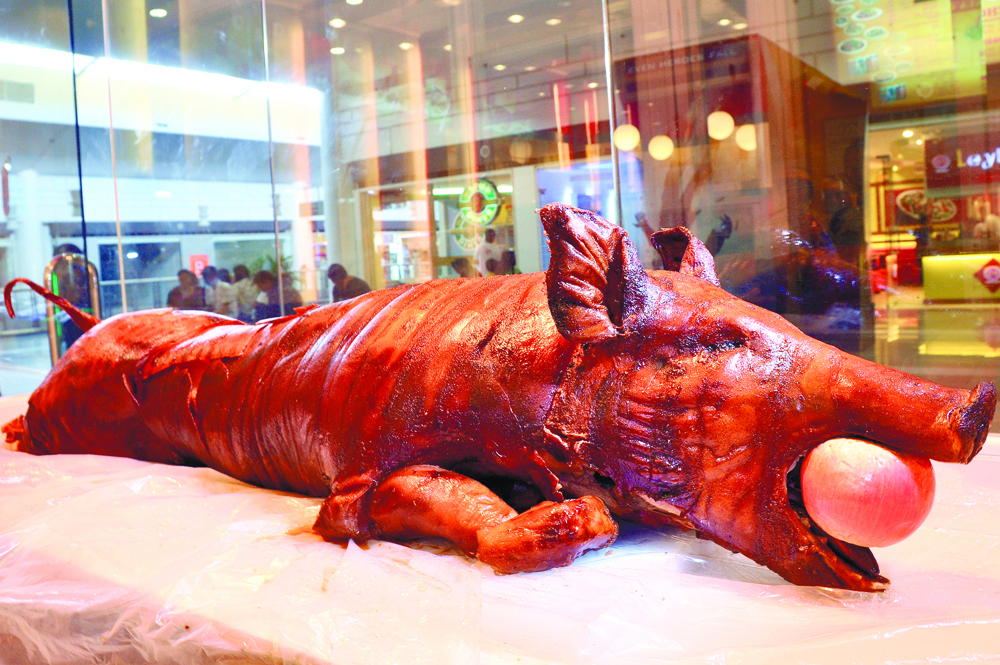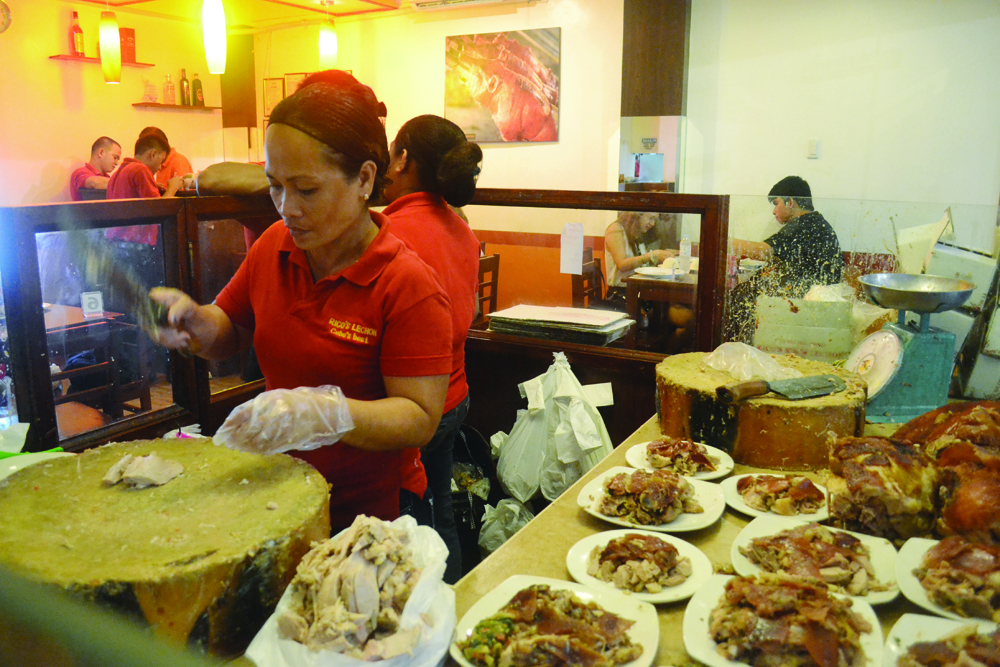Romancing the pig
What makes Cebu lechon so good? Let us count the ways

FIRST things first: There is no sensible way to prove that Cebu’s lechon is “the best pig ever,” with all due respect to the American chef Anthony Bourdain, who made that declaration in 2008.
To reach that conclusion, one would have to organize a blind taste test featuring the best spit-roasted pork from Cuba, Hawaii, Italy, Puerto Rico, Vietnam and many other places in the world where variations on the theme of lechon have been played. And even then the results would be subjective, because what worked for Bourdain may not work for all palates.
That said, however, Cebu’s lechon is indeed very good. What makes it good varies from one lechon house to another.
One establishment, which roasts up to 70 pigs each Sunday, swears by its stuffing, made of lemongrass and local sea salt. Another establishment says what makes its pork special is the fact that they use only hogs from backyard growers and not commercial piggeries, and do not use MSG. And still another says it’s the native spring onions and peppercorns that set Cebu’s lechon apart.

Talisay City’s lechon-makers will not spill their secrets, but their reputation for good lechon is so well-deserved that the city’s Sunday lechon and seafood market on Burgos St. gets a special mention in chef Claude Tayag’s book “Linamnam: Eating One’s Way Around the Philippines” (Anvil Publishing, 2012). So does Zubuchon, whose owner Joel Binamira prepared the lechon that drew those rave reviews from Bourdain.
But don’t just take a chef’s word for it.

The only way to decide which Cebu lechon pleases you best is to sample as many varieties of it as you can manage. You will then notice that the lechon CNT and Rico’s serve is just the slightest bit saltier and juicier than those of other houses. Or that Zubuchon’s flavors and aromas are more subtle than those of other lechons.
Whichever lechon we prefer, its frequent appearance in family celebrations, like trips to the beach and holiday parties, is bound to make it a happy taste memory. Lechon plays a key part in the pleasures of the Cebuano table because it remains simple: more accessible than steak, less complicated than other pork preparations drenched in sauce.

Digging into the hog with a knife, fork or thumb-and-forefinger, surrounded by the warmth of our hungry kin, we get to savor eating as the social and animalistic act it simultaneously is.
Lechon is best eaten within an hour after it is done, while it is warm and fork-tender, before that thin layer of fat under the crispy skin starts to congeal. Lechon that has been exposed for longer than that will need to be rescued, either fried until it is golden brown (pritchon) or simmered over low heat in vinegar and garlic (paksiw).

Our love of lechon is such that, for years now, Cebu has consumed more pigs (80,026 pigs in 2012 alone, according to the Bureau of Agricultural Statistics) than comparable communities like Davao and Laguna, which had about half that number last year. In Talisay, which celebrates the Inasal Festival in October, an estimated 400 hogs are slaughtered every month for lechon dealers.
Driven by competition and a need for novelty, some lechon suppliers have, in recent years, started to offer spicy lechon and boneless lechon. The latter is deboned pork belly, stuffed with herbs and peppercorns and rolled up like the Italian porchetta.
Competition has also pushed lechon purveyors to set up mall kiosks or food halls, where individual portions of lechon await diners on a modest budget. After lechon houses experimented with packaging, boxes of lechon joined mangoes and dried fish as the traveler’s gifts of choice for loved ones hankering for a taste of Cebu.
To that, we say, praise the Lord and all lechoneros for the noble pig, and pass the Lipitor. (N.D. Plume)



